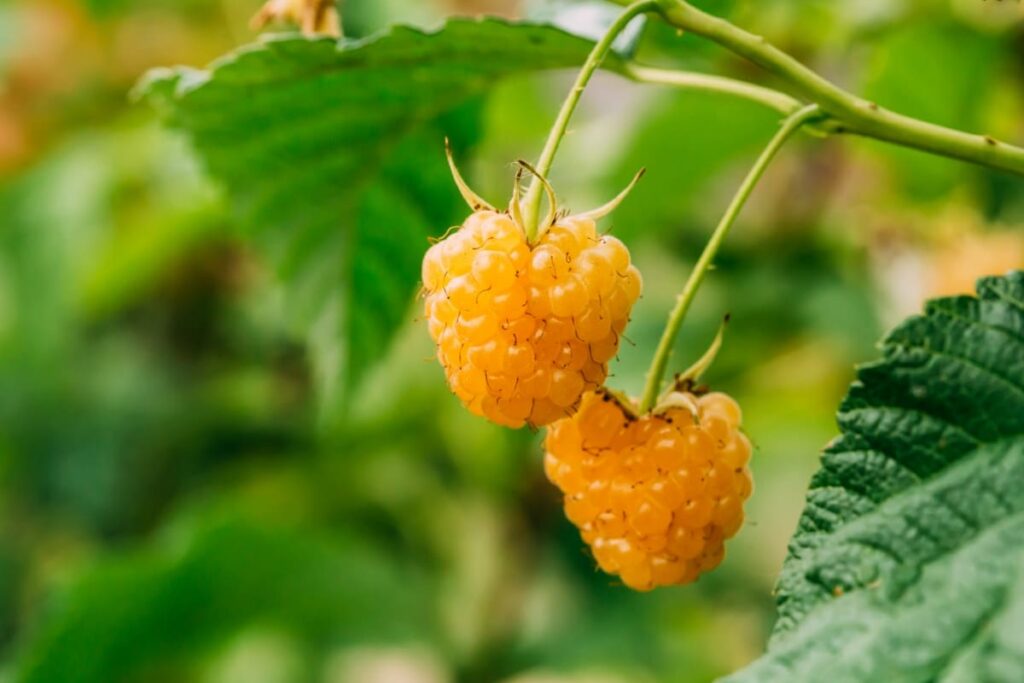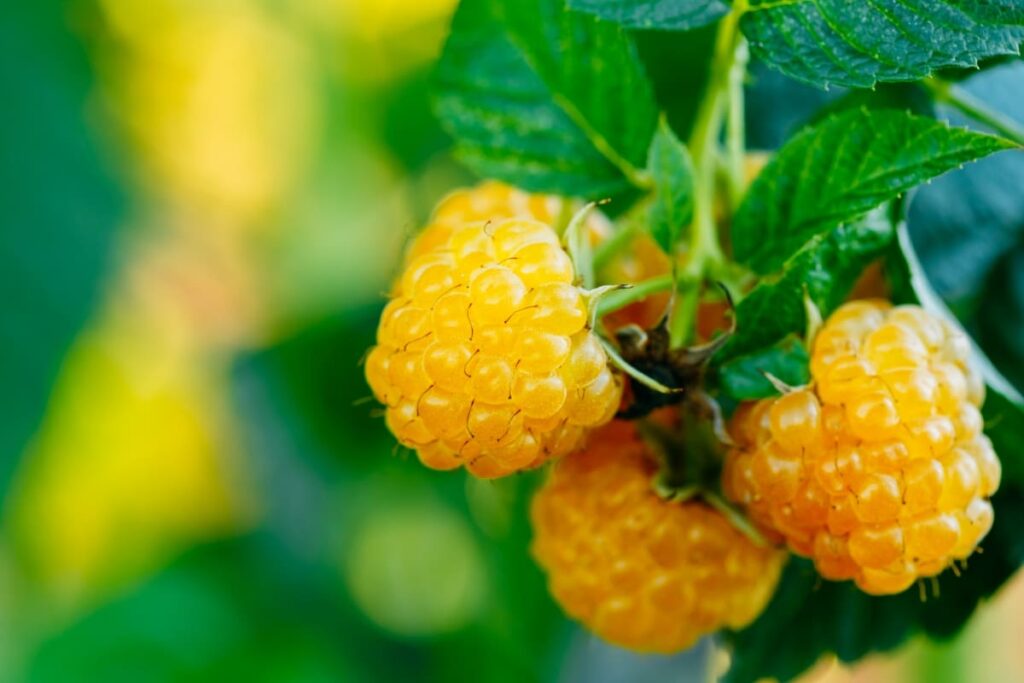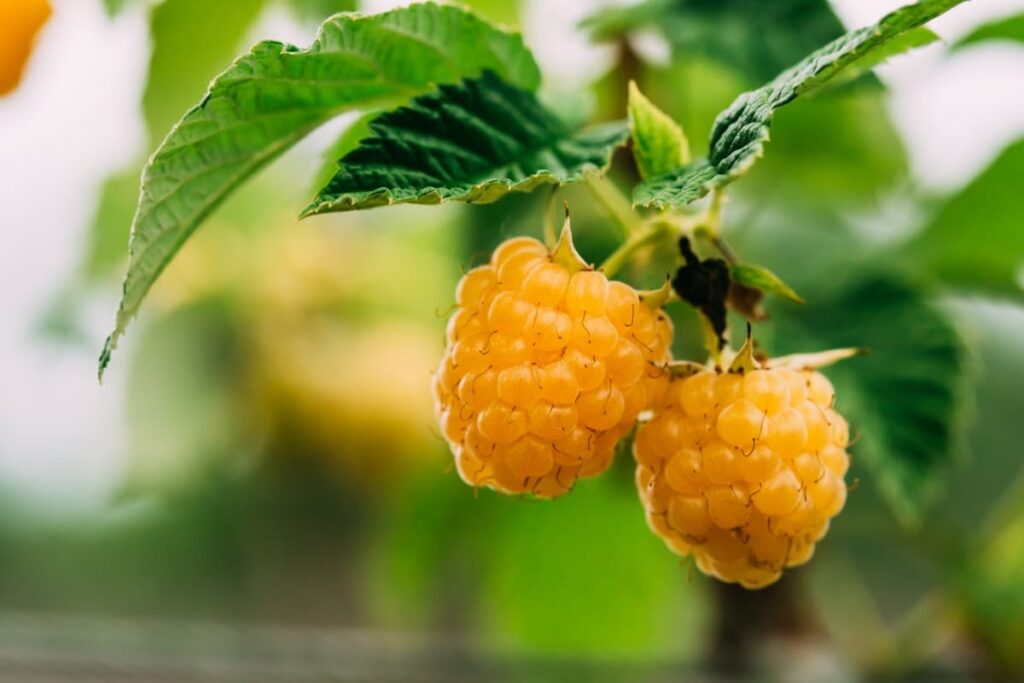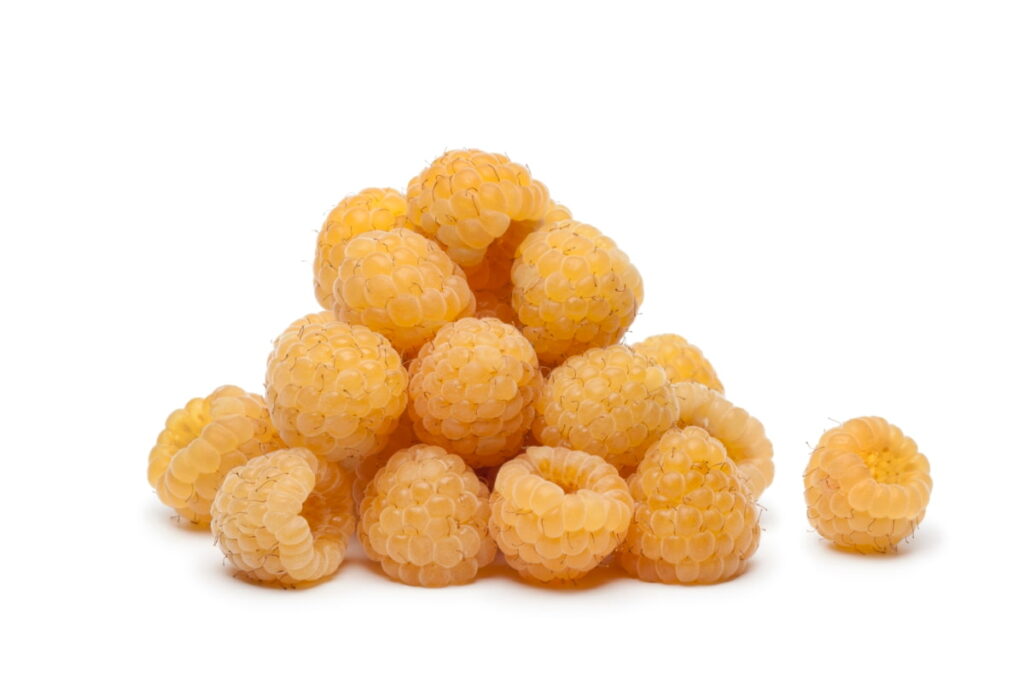Yellow raspberries, a delightful variation of the traditional red raspberry, are gaining popularity for their unique flavor, color, and nutritional benefits. This yellow raspberries guide will navigate you through the essentials of growing yellow raspberries, from selecting the best yellow raspberry plants to understanding their care needs. Yellow raspberry varieties offer a range of flavors and growing habits suitable for different climates and gardens.

Planting yellow raspberries involves considering their soil requirements, watering needs, and sunlight exposure to ensure a bountiful harvest. Caring for these plants includes regular maintenance tasks such as pruning yellow raspberries to encourage healthy growth and monitoring for common pests and diseases. With the right approach, harvesting yellow raspberries can yield a rewarding crop, perfect for various yellow raspberry recipes that highlight their subtle sweetness.
Yellow Raspberries
Propagation of Yellow Raspberries
Propagating yellow raspberries is a rewarding process that can significantly expand your garden. The most effective methods include using root cuttings or dividing existing plants, ensuring each new plant has a portion of the root system to develop independently. The optimal timing for this procedure is during early spring or late fall when plants are dormant, ensuring successful establishment.
Furthermore, multiplying yellow raspberries from emerging runners or suckers at the plant’s base offers a straightforward method to expand your supply. This yields new plants with identical genetics to the parent, preserving the desired traits of yellow raspberry varieties in your garden.
Yellow Raspberry Varieties
There are several yellow raspberry varieties, each with its unique traits and flavors. Some of the best yellow raspberry plants include ‘Fall Gold,’ ‘Anne,’ and ‘Golden Harvest,’ known for their sweet taste and vigorous growth. These varieties differ in their fruiting season, with some producing berries in early summer while others offer a late summer or fall harvest.
Selecting the right variety for your climate and garden space is crucial, as some may be more resistant to local pests and diseases or better suited to the yellow raspberry season in your region. Understanding each variety’s specific needs and characteristics can help ensure a successful and fruitful raspberry patch.
Planting Yellow Raspberries
Planting yellow raspberries requires careful consideration of their growing conditions to ensure a healthy and productive crop. Yellow raspberry cultivation necessitates soil that is well-draining, pH-balanced between 5.5 and 6.5, and abundant in organic content. When planting, make sure to spread the roots in a sufficiently deep and wide hole and place the plants approximately 2 feet apart to promote proper air circulation and optimal growth.
Watering yellow raspberries immediately after planting and during dry spells is crucial for their establishment and ongoing health. Selecting a site that fulfills the sunlight requirements of yellow raspberries, with a minimum of 6 to 8 hours of direct sunlight each day, is crucial for optimizing fruit yield.
Caring for Yellow Raspberry Plants
Caring for yellow raspberry plants involves consistent attention to their watering, feeding, and health monitoring needs. Watering yellow raspberries is crucial, especially during dry periods, to maintain moist but not waterlogged soil. A mulch layer can help retain soil moisture and suppress weeds. Yellow raspberry fertilizer should be applied in early spring and again in mid-summer to support growth and fruiting, with organic options available for those pursuing organic yellow raspberry growing.
In case you missed it: Raspberry Farming, Growing Methods, Planting Guide

Pruning and Training Yellow Raspberries
Pruning and training yellow raspberries are essential for maintaining plant health and maximizing fruit production. Pruning involves removing dead or diseased canes, thinning overcrowded areas, and cutting back old canes that have fruited, as yellow raspberries typically bear fruit on second-year canes.
Training yellow raspberries onto a support structure, like a trellis or fence, aids in growth management, enhances air circulation, and facilitates harvesting. This practice also reduces the risk of damage from wind or the weight of fruit-laden canes. Pruning in late winter or early spring prepares the plants for the growing season, ensuring a tidy, productive raspberry patch.
Pest and Disease Management
Effective pest and disease management in yellow raspberries involves proactive monitoring and timely interventions to ensure plant health. Common yellow raspberry pests include aphids, spider mites, and raspberry beetles, which can be managed through natural predators, insecticidal soaps, or careful removal by hand.
Yellow raspberry diseases often stem from fungal infections, such as root rot or powdery mildew, necessitating good hygiene practices like removing infected plant material and ensuring adequate spacing for air circulation. Utilizing resistant varieties and practicing crop rotation can further mitigate the risk of diseases, maintaining a healthy and productive raspberry patch.
Harvesting and Using Yellow Raspberries
Harvesting yellow raspberries at the peak of ripeness, typically when they easily come off the receptacle, ensures the best flavor and quality for consumption. Regular harvesting encourages further fruiting and reduces the risk of pest infestations. Yellow raspberries are versatile in the kitchen, perfect for fresh eating or incorporated into various yellow raspberry recipes, from jams and desserts to savory dishes. Their unique color and flavor profile can elevate culinary creations, offering a delightful twist on traditional raspberry dishes.
In case you missed it: Ultimate Guide to Growing Hydroponic Strawberries: Tips, Techniques, and Best Practices

Troubleshooting Common Issues
Troubleshooting common issues with yellow raspberries involves addressing problems like poor fruiting, discolored leaves, or stunted growth. Factors such as inadequate sunlight, improper watering, or nutrient deficiencies often underlie these issues. Adjusting care practices, such as ensuring the plants receive enough sunlight, maintaining consistent soil moisture, and providing balanced fertilization, can help rectify these problems. Consulting a local extension service or gardening expert can also provide tailored advice for specific challenges faced in your area.
Benefits of Growing Yellow Raspberries
Growing yellow raspberries offers numerous benefits, from the nutritional advantages of the berries, rich in vitamins, antioxidants, and fiber, to the aesthetic appeal of the plants in a garden setting. Additionally, cultivating yellow raspberries can contribute to biodiversity, supporting a range of pollinators and beneficial insects. The joy and satisfaction of harvesting home-grown berries and their versatility in the kitchen make yellow raspberries a rewarding addition to any garden.
In case you missed it: Vertical Strawberry Farming: A New Way to Increase Your Income and Yield

Conclusion
Yellow raspberries offer a delightful and nutritious option for gardeners seeking to diversify their fruit crops. These vibrant berries can thrive with proper care, from planting to harvest, providing bountiful yields and culinary versatility.
- Profitable Village Farming Business Ideas in 2024
- High-Yield Aquaculture: Fast-Growing Fish for Farming
- Effective Fish Pond Construction Techniques for Beginners
- Irrigation and Water Management in Pineapple Farming
- Blossom to Harvest: Mastering Flowering and Pollination in Papaya Farming
- Pig Fattening Essentials: From Selection to Sale for Beginners
- Raising Wagyu Cattle: A Complete Guide for Premium Beef Production
- Soil Types and Their Water Holding Capacity
- Optimizing Irrigation Schedules for Coconut Groves for Enhanced Yield
